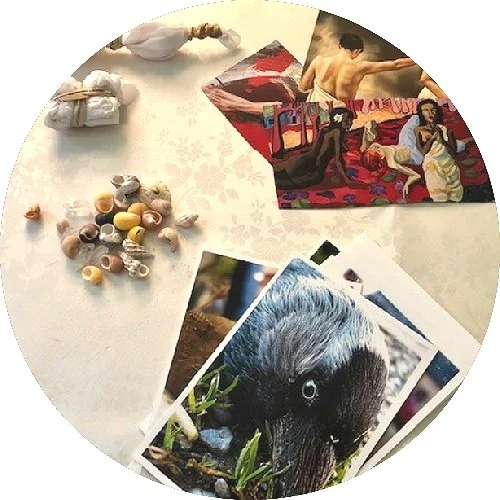Crafting A Crafter
Artist
In my research about crafts such as needlework, collage, textile arts, and photography, I became interested in writers and theorists such as bell hooks, Layli Long Soldier, Eve Kosofsky Sedgwick, Jen Bervin, Sara Baume, and Sarah Hall who cross the threads of research, art, and creative writing in their work. Reading and writing this way asks you to become more attentive to the processes, methods, and materials makers use in the crafting of their projects—a dynamic that often highlights various forms of resistance and healing that emerge in these hybrid texts.
This exercise asks you to engage more closely with processes and materials in the development of a character. In ‘crafting a crafter,’ you should feel empowered to explore the material world around you and connect your findings to narrative in new ways.
Amy E. Elkins (she/her/hers) is Associate Professor of English at Macalester College and the author of Crafting Feminism from Literary Modernism to the Multimedia Present (Oxford University Press, 2022). As a scholar, multimedia artist, and writer, she's interested in intersectional approaches to the archive and cultural history in addition to experimental and multimedia academic writing practices. You can see her film-essay here and can find her on X/Instagram @amyEelkins.
Amy E. Elkins
Collect raw materials for an art project.
Invitation
Collect raw materials for an art project. This collection could be magazine cuttings, trash, leaves, shells, photographs, upcycled textiles or embroidery, hair/fur, masks—anything goes!
Sitting with these materials, think about the place they came from. Examine them closely. Jot down some notes about their origin and the feelings they provoke for you. Nostalgia? Joy? Rage? Love? Anxiety?
Imagine an artist who might use these materials in their arts practice. What do they do with these things? What motivates them to create a certain kind of art? Who is the audience for their work? Their influences? Do they have to research certain things (political events, ecosystems, family histories, etc.) for their work? Create a profile of this crafter. The length of your profile will vary, but aim for 2-3 pages at least.
Create a visual aid using your raw materials and photograph it, including it in your crafter’s profile.
